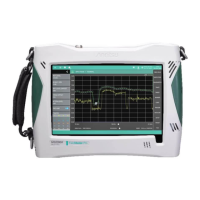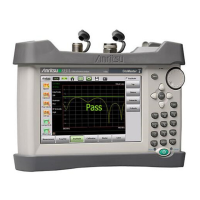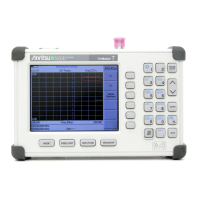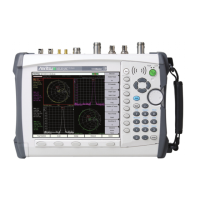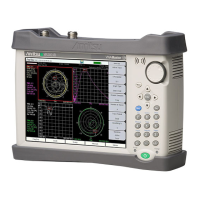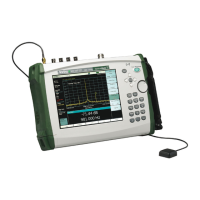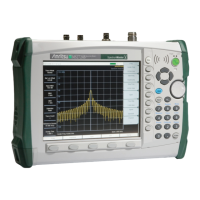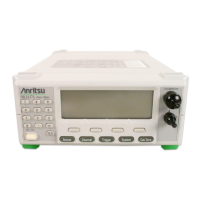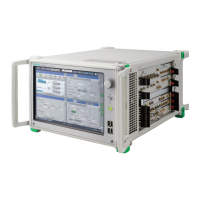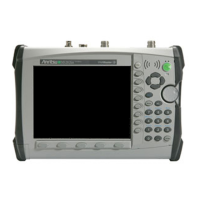General Information 1-3 Instrument Care and Preventive Maintenance
MS2090A UG PN: 10580-00444 Rev. U 1-5
1-3 Instrument Care and Preventive Maintenance
Instrument care and preventive maintenance consist of proper operation in a suitable environment, occasional
cleaning of the instrument, and inspecting and cleaning the RF connectors and all accessories before use.
Clean the instrument with a soft, lint-free cloth dampened with water or water and a mild cleaning solution.
Ventilation and Cooling
The Field Master Pro provides active cooling of the internal components to prevent damage from overheating.
The airflow vents on the edges and bottom of the instrument must be kept clear and unobstructed while the
instrument is powered on. When using the Field Master Pro on a desktop or bench, the tilt bail can be used or
the instrument can be placed flat on its back to facilitate increased airflow.
Connector Care
Clean the RF connectors and center pins with a cotton swab dampened with denatured alcohol. Visually
inspect the connectors. The fingers of the N(f) connectors and the pins of the N(m) connectors should be
unbroken and uniform in appearance. If you are unsure whether the connectors are undamaged, gauge the
connectors to confirm that the dimensions are correct. Visually inspect the test port cable(s). The test port
cable should be uniform in appearance and not stretched, kinked, dented, or broken.
To prevent damage to your instrument, do not use pliers or a plain wrench to tighten the Type-N connectors.
The recommended torque is 12 lbf·in to 15 lbf·in (1.36 N·m to 1.70 N·m). Inadequate torque settings can
affect measurement accuracy. Over-tightening connectors can damage the cable, the connector, the
instrument, or all of these items.
Visually inspect connectors for general wear, cleanliness, and for damage such as bent pins or connector rings.
Repair or replace damaged connectors immediately. Dirty connectors can limit the accuracy of your
measurements. Damaged connectors can harm the instrument. Connection of cables carrying an electrostatic
potential, excess power, or excess voltage can damage the connector, the instrument, or both.
Connecting Procedure
1. Carefully align the connectors. The male connector center pin must slip concentrically into the contact
fingers of the female connector.
2. Align and push connectors straight together. Do not twist or screw them together. A slight resistance can
usually be felt as the center conductors mate.
3. To tighten, turn the connector nut, not the connector body. Major damage can occur to the center
conductor and to the outer conductor if the connector body is twisted.
4. If you use a torque wrench, initially tighten by hand so that approximately 1/8 turn or 45 degrees of
rotation remains for the final tightening with the torque wrench.
Relieve any side pressure on the connection (such as from long or heavy cables) in order to assure
consistent torque. Use an open-end wrench to keep the connector body from turning while tightening
with the torque wrench.
Do not over-torque the connector.
Caution To avoid damaging the display or case, do not use solvents or abrasive cleaners.
Caution
Do not operate or store the Field Master Pro in extreme environments. Refer to the instrument
Technical Data Sheet for the specified operating and storage conditions.

